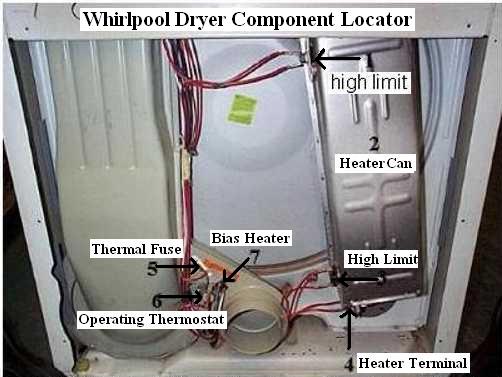My dryer stopped heating, the heating element is bad! Not usually. In our experience with working on thousands of dryers, the most likely culprit for a dryer that is not heating is a blown thermal overload and not the heating element itself. Dryers have several devices included as a part of their electrical system that help to prevent overheating. Thermal overloads, fuses, thermostats, etc. are all incorporated into the design of the dryer in various ways depending on the manufacturer.
Some of these devices "blow" and don't reset which is the case of most thermal overloads (as opposed to thermostats which open and then reclose when the heat drops a certain predefined amount). These are typically located near the heating element somewhere on the outer metal cover. They can be located soley in the heater circuit or can be in the heater and the motor circuit which results in either a dryer that runs but doesn't heat or a dryer that doesn't run at all when the overload "blows" depending on which location the manufacturer decided to use. They must be replaced to restore heat. While it may be tempting to bypass the thermal overload doing so can be extremely dangerous and could result in the dryer overheating and resulting in a fire.
The best way to check the thermal overload is to enter your model number in google and take a look at a video on how to access the part in your particular dryer. In most dryers it's a very simple process and is a much less expensive than having to replace the heating element.
Below is a photo of how the heating system with overloads looks in a whirlpool design with the heating element located in the back. The upper right device noted in the phto as "high limit" is the thermal overload which in this Whirlpool design turns off the heating element but not the motor.




